The new Research Fellow for 2016 has been appointed – Dr Alyson Murray
Dr. Alyson Murray obtained her PhD in Infection Biology from University College Dublin in 2013. She then began her career in cancer biology when she commenced her postdoctoral research in the lab of Professor Joe Duffy in St. Vincent’s Hospital, Dublin.
The research in Professor Joe Duffy’s lab is focussed on targeted therapies in breast cancer. In particular, Alyson is investigating the possible use of a synthetic form of vitamin D* for the treatment of breast cancer. There is increasing evidence that vitamin D may have a protective role in breast cancer, which Alyson is hoping to confirm as part of her research.
Collaborators include Professor John Crown, Professor Willliam Gallagher (UCD) and Dr Norma O’Donovan (DCU). Alyson has published in international peer reviewed journals along with collaborators from Cancer Research UK Cambridge Institute and The Institute of Cancer Research London. Alyson is also involved in the Irish Cancer Society Collaborative cancer research centre, BreastPredict (www.breastpredict.com).
Targeting the Vitamin D receptor as a potential treatment for breast cancer
The active form of vitamin D* is involved in a number of the body’s processes, most notably in the absorption of calcium. However, recent evidence implicates a deficiency in vitamin D in the formation and progression of cancer. Therefore we propose that vitamin D could have the potential to be used as a therapeutic agent in the treatment of cancer. The active form of vitamin D binds to the Vitamin D receptor (VDR) that is present on almost all cells of the body, including in the breast. When activated, this receptor then drives a number of reactions that can lead to a decrease in cancer cell growth, an increase in cancer cell death and a decrease in invasion and metastasis.
The research performed in our lab is looking at the use of vitamin D as a treatment for breast cancer. We have screened a large panel of breast cancer cells, which includes all of the different breast cancer subgroups, for the response to vitamin D exposure. We saw a response to treatment in all subgroups and could calculate the concentration of VD that would be required to reduce the growth by 50%. This concentration indicated the most responsive cells. The Estrogen receptor positive cells responded best to treatment, followed by the HER2 group and finally the triple negative cells.
In order to utilize vitamin D in a patient, you would need to ensure the concentrations prescribed are low enough to avoid hypercalcaemia but still maintain the anti-cancer properties. To try overcome this we have been researching the effects of a synthetic form of vitamin D. This has been shown to require much lower doses to reduce the growth of cancerous cells. Part of our research is involved in thoroughly comparing the actions of both the natural and the synthetic forms of vitamin D, and determining the method of action.
In a clinical environment vitamin D would likely be given in conjunction with another treatment. So, to test the benefits of this we are looking at the effect of vitamin D on the growth of breast cancer cells when treated alongside a number of chemotherapy and hormonal agents. One notable discovery so far, is that we can see a response to the estrogen receptor targeting agent Tamoxifen in the triple negative cells. We are currently exploring many avenues to discover both how this is happening and how it may be exploited in a clinical environment.
“We need to continue to raise funds to ensure that Dr Murray’s research be enabled to continue beyond December 2016 – to be given reasonable time to reap rewards.”
Video interview from Cancer Clinical Research Trust (CCRT) with an update about how cancer research is progressing…


